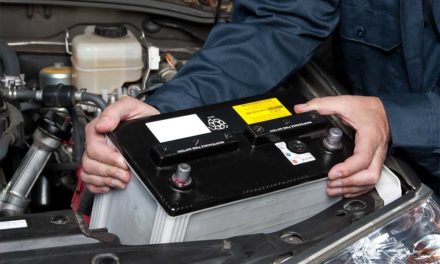With winter approaching, drivers are being warned to consider the importance of dashboard warning lights and what issues they can be highlighting. In fact, almost half of Brits have ignored their dashboard light warnings, one in five claim they will drive for two or three days before investigating issues and two in five ignore them hoping they’ll go off and a third leave them in fear of expensive repair bills.
Car leasing company Vehicle Contracts has explained the key car dashboard warning symbols not to ignore to avoid potential breakdowns this winter.
- Brake light: If this red light symbol flashes up and remains on whilst driving, it can mean that the brake fluid level is low and needs topping up. A low brake fluid level can impact the efficiency of the car brake system, so seek professional advice immediately to get the brakes checked out.
- Low tyre pressure warning: This monitoring system will illuminate when a tyre falls below the safe level of pressure. Driving with low tyre pressure is unsafe so always reduce your speed and steer corners gently to avoid tyre blowout or losing traction on the road. You can use an air compressor at most petrol stations to check tyre pressure and top up according to your car model specifications.
- Anti-Lock Brake System (ABS) light: This safety feature is key in winter driving conditions as it acts as a back-up braking system that will release and pump the brakes 100’s of times a second to help stop the vehicle from skidding. If this fails, unassisted braking will still work but take extra care and drive slowly. When this light illuminates combined with the brake warning lights, it is highly recommended that you should stop and contact your breakdown recovery as it means the brake system is failing.
- Brake pad warning light: This light will show when the sensor has detected that the brake pads on the vehicle are wearing thin and require immediate attention to get them changed.
- Electronic Stability Problem (ESP) light: Another symbol not to ignore especially in icy or wet conditions, the ESP warning light highlights a problem with traction control. When flashing, the system is at work and intervening with an immediate traction issue, such as skidding. If the light remains on, the system will not be working properly. Restart the engine and if the light remains constant, it’s time to get it checked at a garage.
- Fuel light: A common symbol most drivers will be aware of is the fuel light. In winter especially, it’s best not to be caught short with low fuel, so for peace of mind, set off on long journeys with a full tank, and take an extra can of fuel if possible to avoid breakdown due to fuel shortage.
Rob Harris, Director at Vehicle Contracts – ‘The warning symbols on the dashboard are there to highlight potential safety or maintenance issues, and any that flash up during a journey should be addressed as soon as possible.”
As a basic check during the winter months, it’s vital to ensure that car tyres are in good condition for gripping the road, and are at the correct pressure, as this will impact braking distance on slippery roads.
Losing traction at speed is dangerous, so it is also important that the Anti-Lock Braking System is working to ensure you don’t lose control of steering if braking sharply on icy roads. Doing checks before and after car journeys, and keeping up to date with services, will ensure that vehicles perform safely on the roads in wintertime.















